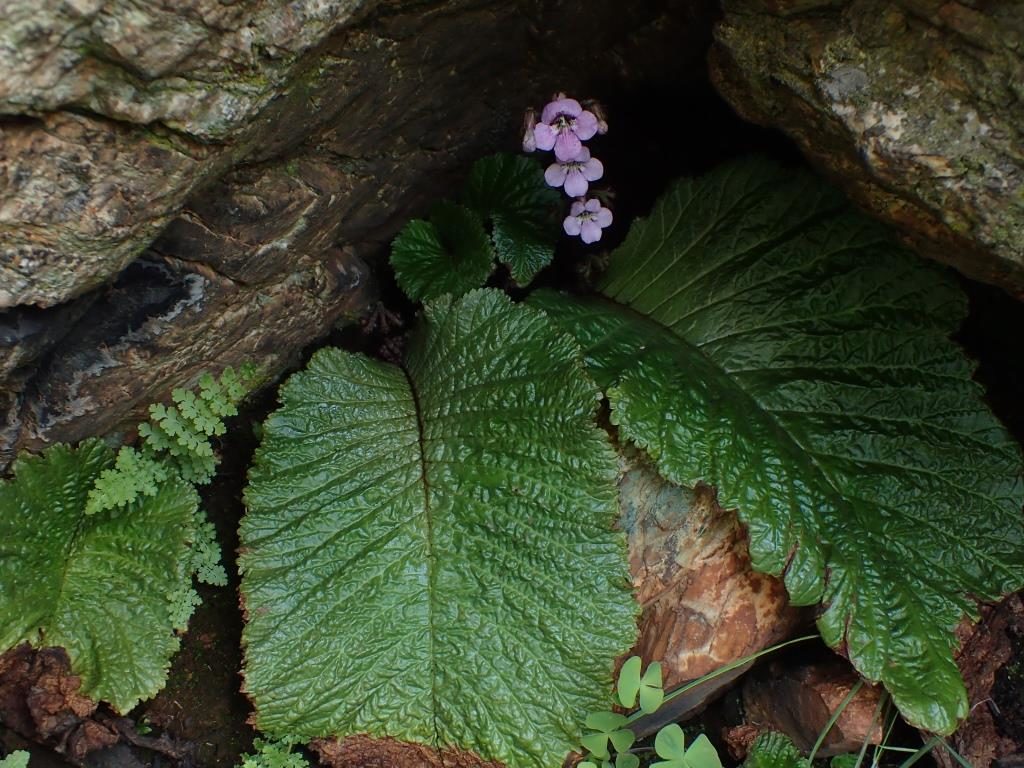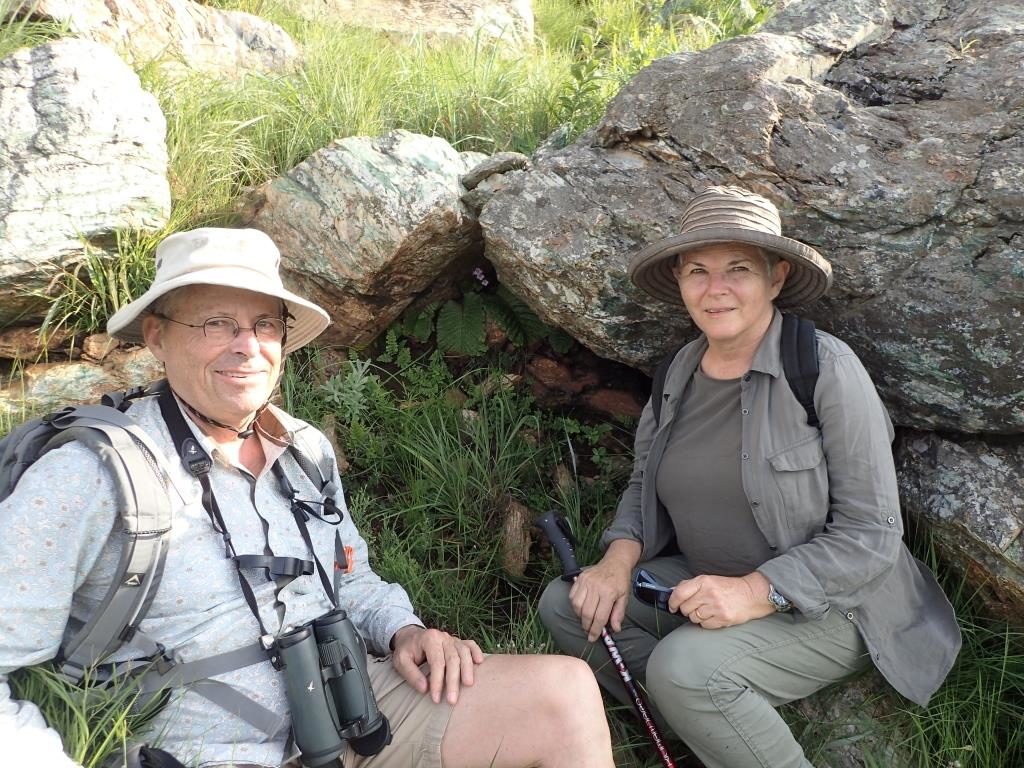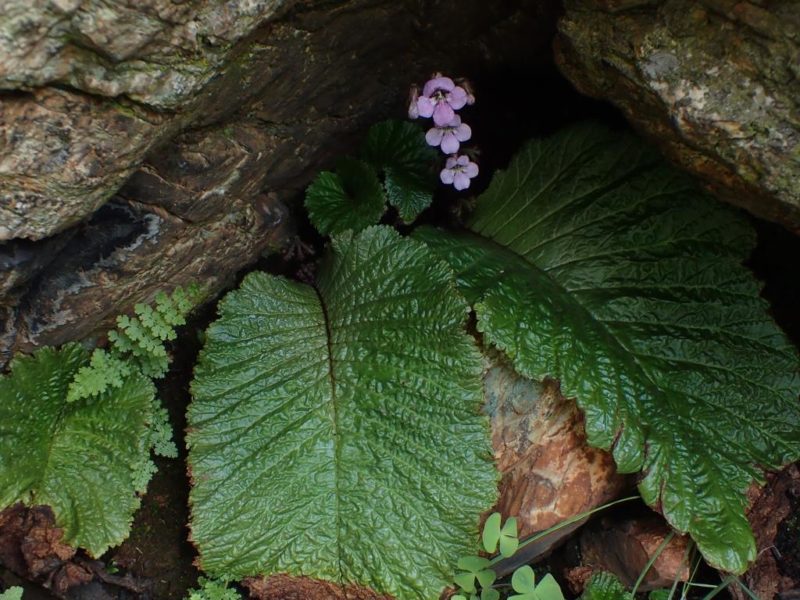
Streptocarpus denticulatus in bloom on Mountainlands Nature Reserve.
In 1913, George Thorncroft, a pioneering naturalist who explored the Barberton area collected a plant that was dubbed Streptocarpus denticulatus. Denticulatus referred to the serrated margins of the leaves. A hand written note on the Type specimen that is housed at the Herbarium of the Royal Botanic Gardens, Kew, states the following: “Streptocarpus denticulatus, N.E. Br. Type Specimen! Bot.Mag. T. Cambridge Botanic Garden. June 1, 1914. Collected by Mr. Thorncroft on a mountain near Barberton, Transvaal, & seeds sent to Mr W. Ledger who sent some to Cambridge.”
As with many plants collected in those days the localities were vague due to few reference points for European explorers. “On a mountain near Barberton” could have been anywhere in the Makhonjwa mountains. To our knowledge, the locality of this population disappeared of the radar until 2012 when Nico Oosthuizen showed a photo of a strep leaf he took to plant boffin Warren McCleland. Warren was of the opinion that it may be Streptocarpus denticulatus Turrill (family Gesneriaceae) in which case it was a significant discovery.
That was an exciting moment. Could the discovery of a population of Streptocarpus denticulatus on Mountainlands Nature Reserve be the long lost ones of George Thorncroft ? If so, then this South African endemic species, which is currently classified as Vulnerable, (meaning the species faces a high risk of extinction) is protected in a proclaimed nature reserve within the Barberton Makhonjwa World Heritage Site. These plants have a restrictive range between Barberton and Belfast where other populations were discovered.
The Mountainlands locality was visited again in 2018 and more leaves were photographed to look at the margins. At last the plants were photographed in bloom in January 2019 and a specimen collected for the Mountainlands Nature Reserve herbarium. When you know where and what to look for they are easy to see as the purple pink flowers with spotted white throats make a pretty display. The plants seem to prefer a specific habitat mostly in shaded, rocky crevices in the high lying grasslands and share the same area as other Barberton specials such as Aloe albida (Near Threatened) and Thorncroftia thorncroftii (Vulnerable).

Garry and Shirley Boyd with one of the Streps that are in bloom.
This find is a testimony to the unique natural treasures on Mountainlands Nature Reserve and raises hope that there may be more populations that still await discovery on the reserve and other parts of the Makhonjwa mountains. It is just a question of doing the footwork necessary.

